Introduction
It is amazing living here in San Sebastián, the entire city is very beautiful with amazing beaches. But one the best parts of San Sebastian is the food. Up until this point I didn’t know any of the good bars to go to eat and especially any where that had Basque food. That all changed today. Half of Session 2 went on Wednesday to the Old Town part of San Sebastian to go to several different Pintxos bars. Pintxo bars are an iconic food that is unique to San Sebastián. Here Pintxos are not only food, but part of their culture. Pintxos originated in the early 20th century as small snacks, originally held together with toothpicks, and usually accompanied with some sort of alcohol. Over time Pintxos have evolved into a diverse type of food that are unique to each Pintxo bar.
The Tour
The first Pincho bar we went to was called Haiza Bar which is located just outside Old Town. Professor Zabalbeascoa had already gotten us reservations and by the time we arrived he had already ordered us two different types of Pintxos. The first was one of the oldest, and possibly the first Pintxo ever created called the Gilda. This was on a toothpick and had an olive, anchovy, and several green peppers. This Pintxo was a cold Pintxos and was very vinegary wich likely came from the combination of the salt from the anchovy, olive, and the sauce that was on it.
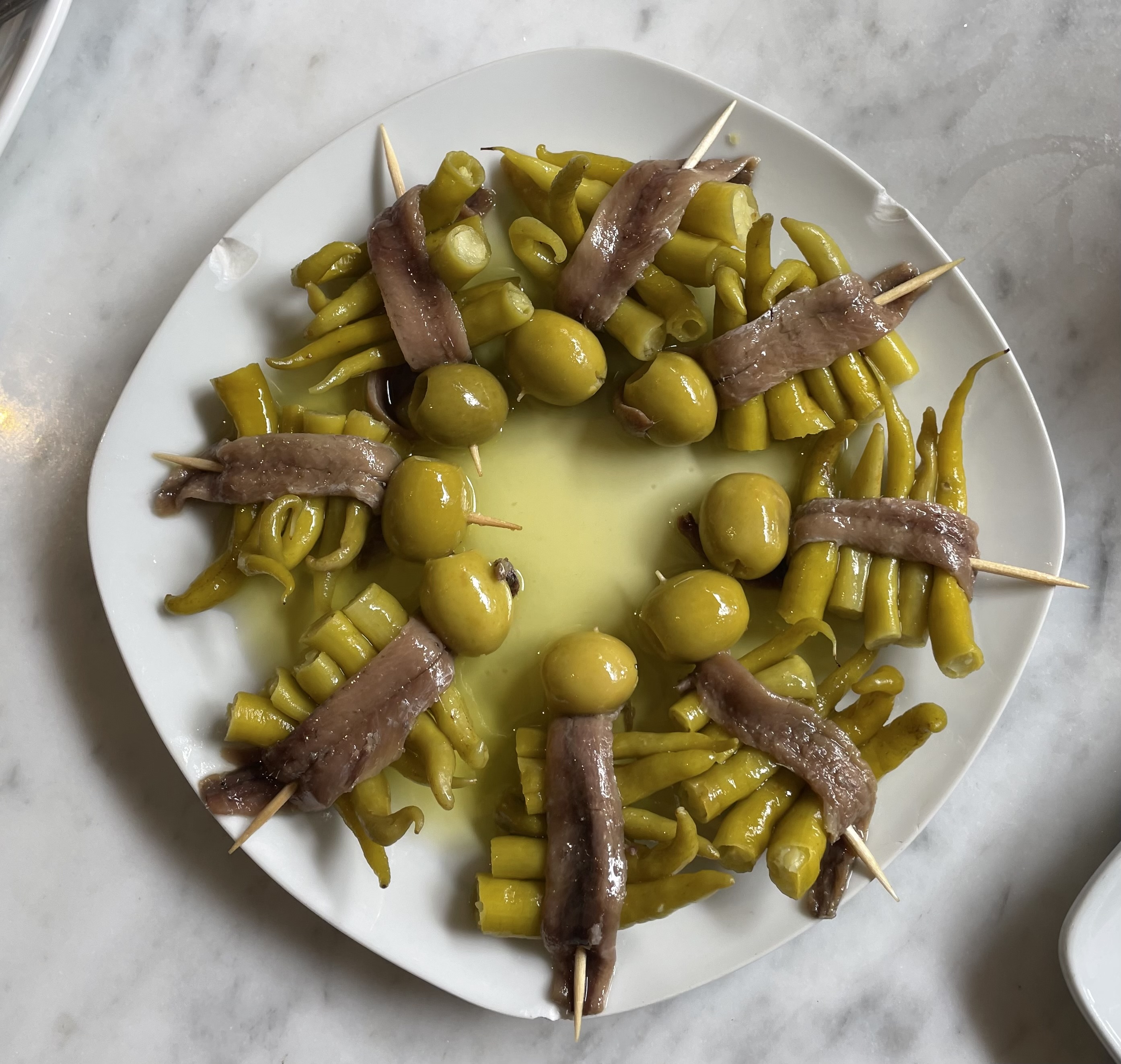
The second one was called the Brick de Bacalao. The closest to something I have had that is similar to this in the US is a Crab Ran Goon. The plate was dribbled with balsamic vinegar and the outside was wrapped in a phyllo pastry with the wafer also raping the outside like ribbon on a present. Inside was salted cod. The salted cod has had a huge impact on the history of the Basque region as a whole. They were the first to be able to dry and salt cod with them later re hydrating it on ships, allowing food to be preserved for along time. This allowed them to go for longer sailing trips allowing them to easily travel to North America to hunt wales for there oil. This in turn allowed them to be the first region to regularly travel the Atlantic.
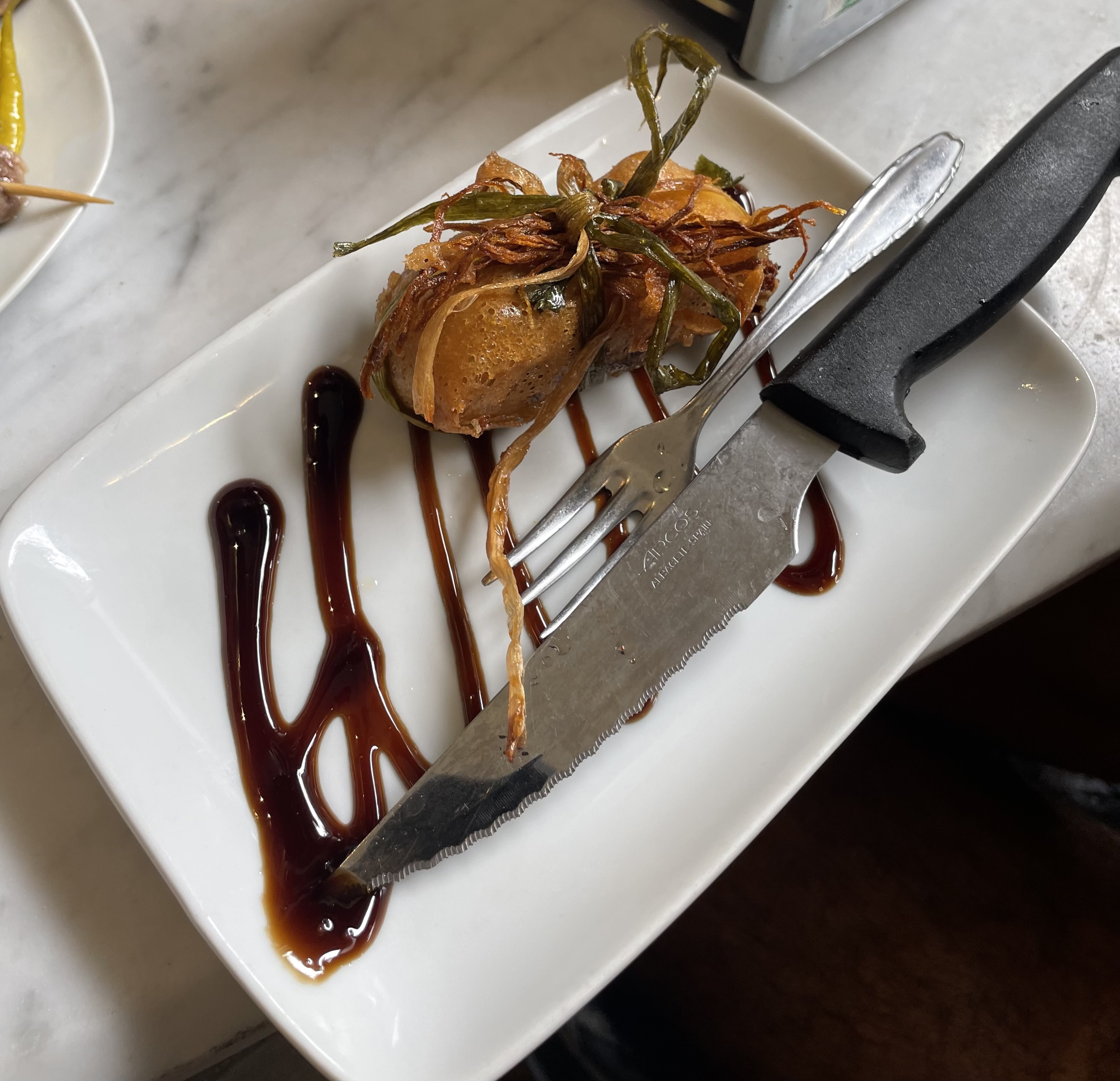
The second Pintxo bar was called Bar Borja Berri. Inside it was very busy with people squeezed up against each other and the waiter yelling out orders to the kitchen with the chefs somehow being able to hear it over all the noise. We had several different Pintxos here, the first one being pork rib, located in the upper left and bottom middle, the meat was very tender, the seasoning was very good and the sear was nice as well. Had a similar flavor to the pork ear, which is located in the middle left. It was very crispy and also was very tender. The most tender of all was the beef cheek located in the upper right and bottom right. It is probably the most tender meat I’ve ever had and the most flavorful as well. On the bottom left is seasoned steak that was a little undercooked in the middle but still really good. I don’t know what was in any of the seasonings, but they were all very good. In the middle there were scallops that were cooked really well and tasted much fresher than in the US. It’s is likely due to the fact that there is an underground supermarket just outside of Old Town that gets fresh seafood every day. My favorite was the pasta, located in the middle right that had three cheeses that are all made the Basque region. It was very creamy and a little soup like.
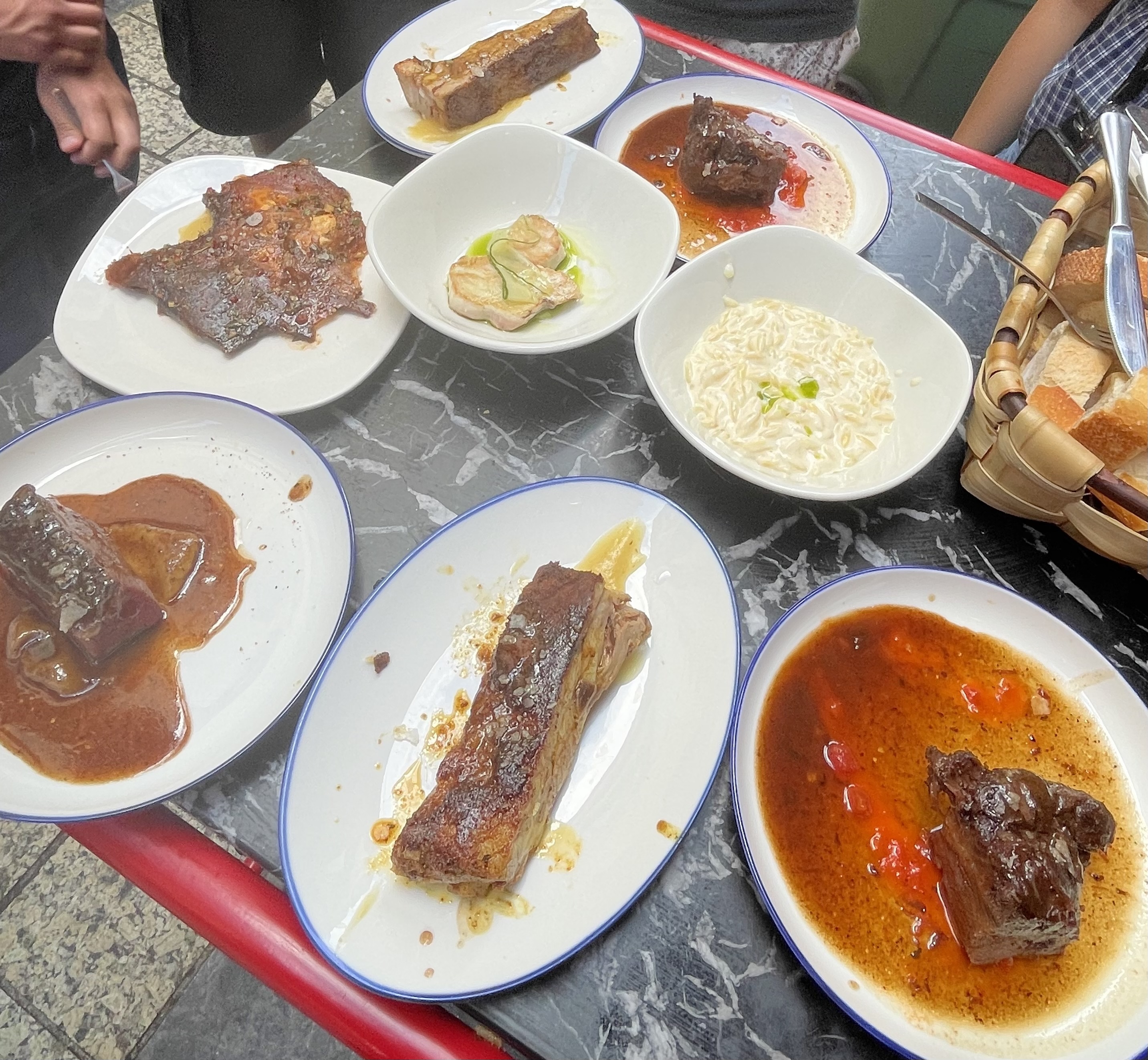
Next we went to Paco Bueno with another one of the oldest Pintxo bar in the city, apparently it has some of the greatest Pintxos, but the bar was closing when we got there due to siesta. We did get fried calamari which were a little soggy but otherwise tasted pretty good. It did have a similar texture of onion rings.
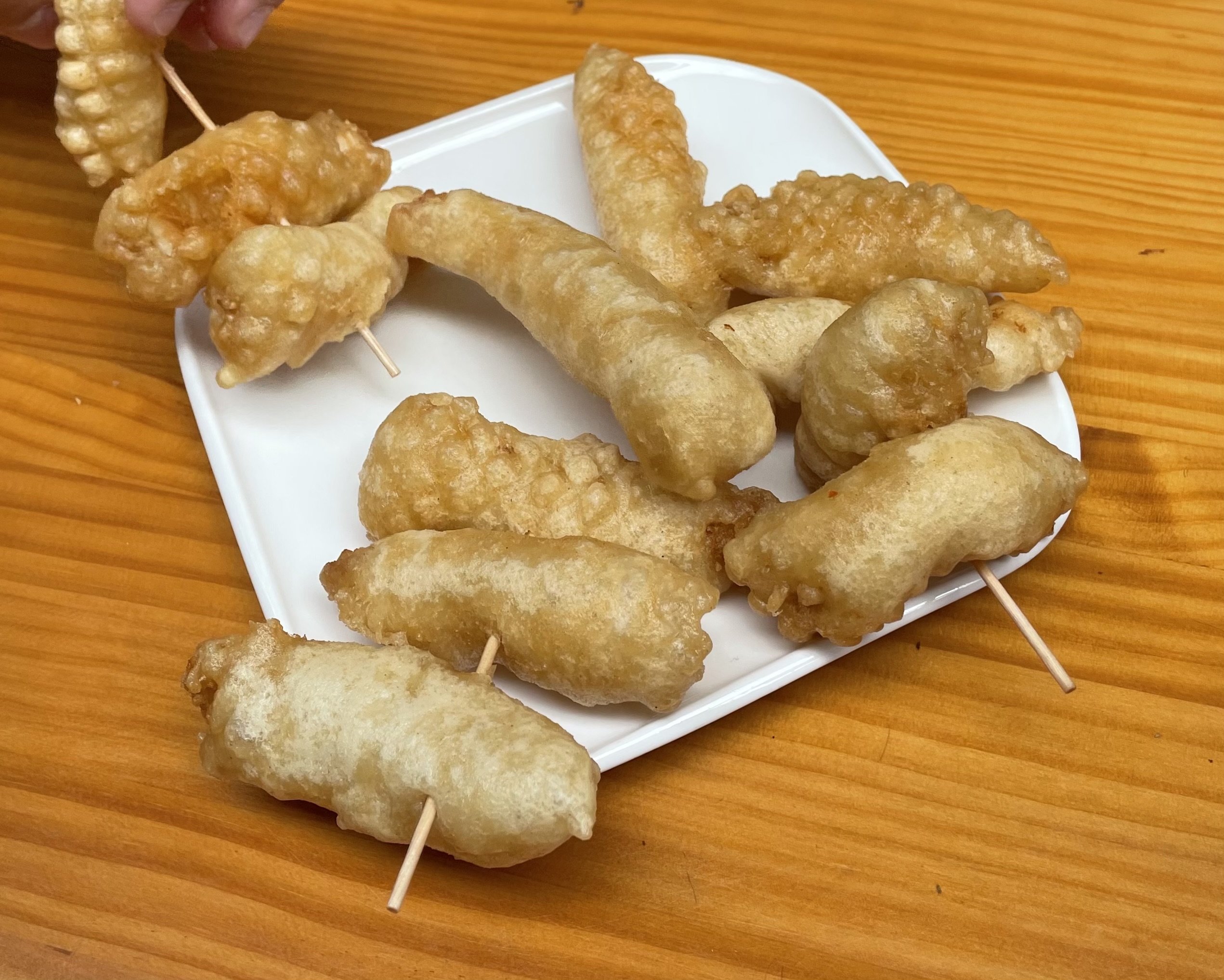
Then we wandered around old town finding bar after bar was closing due to siesta. We did go to Plaza de la Constitucion wich is where there used to be bull fighting. Eventually we went to Bar Martinez which got a Michelin star in 2018. The architecture in the inside made it feel like it was a more modern Pincho bar. We first got zamburiña which are scallops on clamshells with calamari which is located on the top. In my opinion the scallops from Bar Borja Berri were much better these but they made up for it with caviar and the paste underneath. The other two plates were Bacalao wich was pretty good with onions and peppers though it was a bit sour tasting.
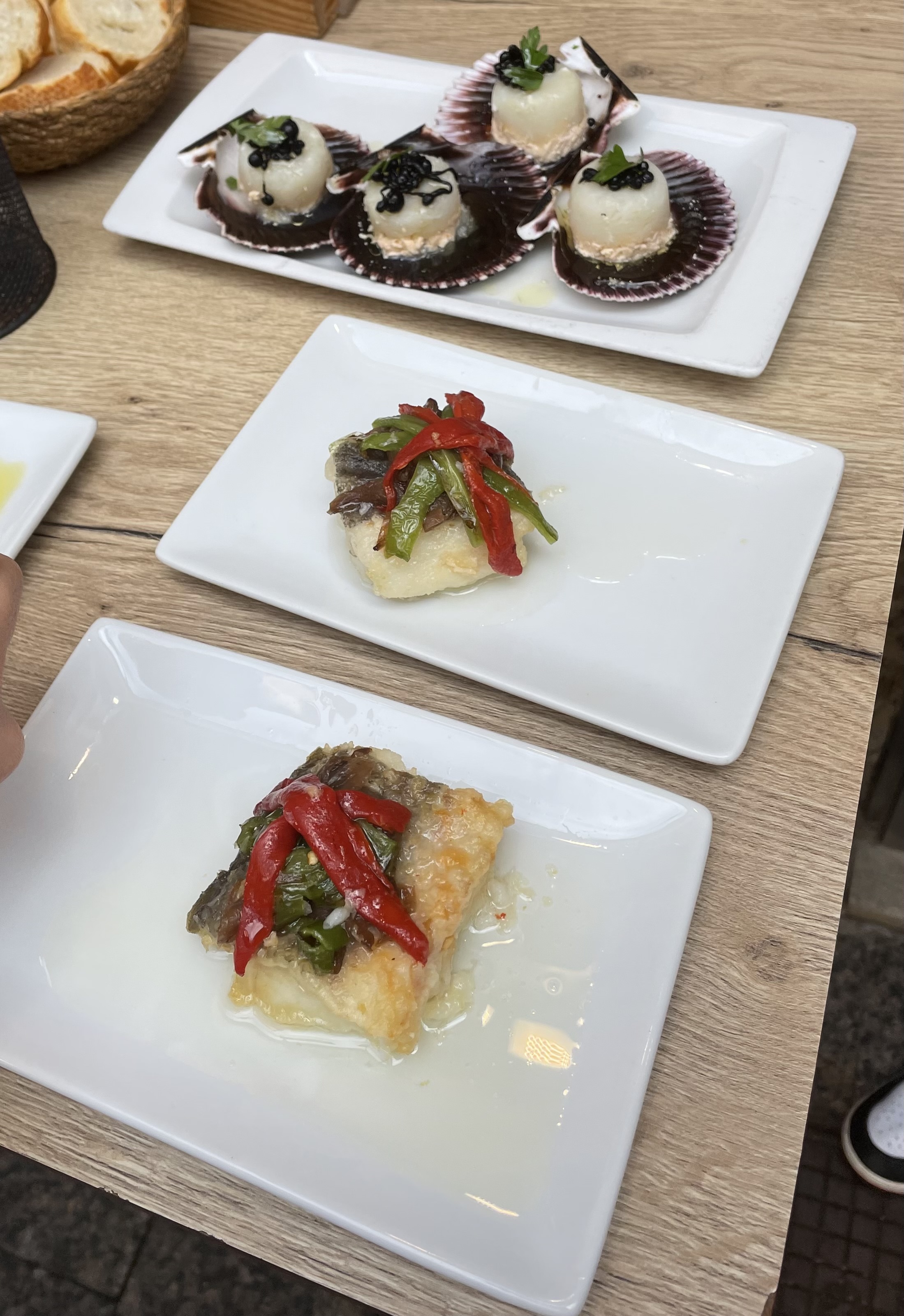
We also got octopus and potatoes that were covered in paprika. I had never eaten octopus in my life, always regarding the animal as very intelligent and not worth eating. The texture was a little tough but the paprika masked the flavor. I would have liked less seasoning so that I could know what octopuses actually tasted like, but it was good overall.

The last Pintxo that we had was pickled pepper stuffed with tuna on bread. For some reason, even though it is Professor Zabalbeascoa’s favorite, only two people tried it while the rest of us didn’t even attempt to take a bite. This is odd considering everyone had tried everything else, allergy depending, but no one wanted to try it. It still looked good but it felt weird that no one was eating it.
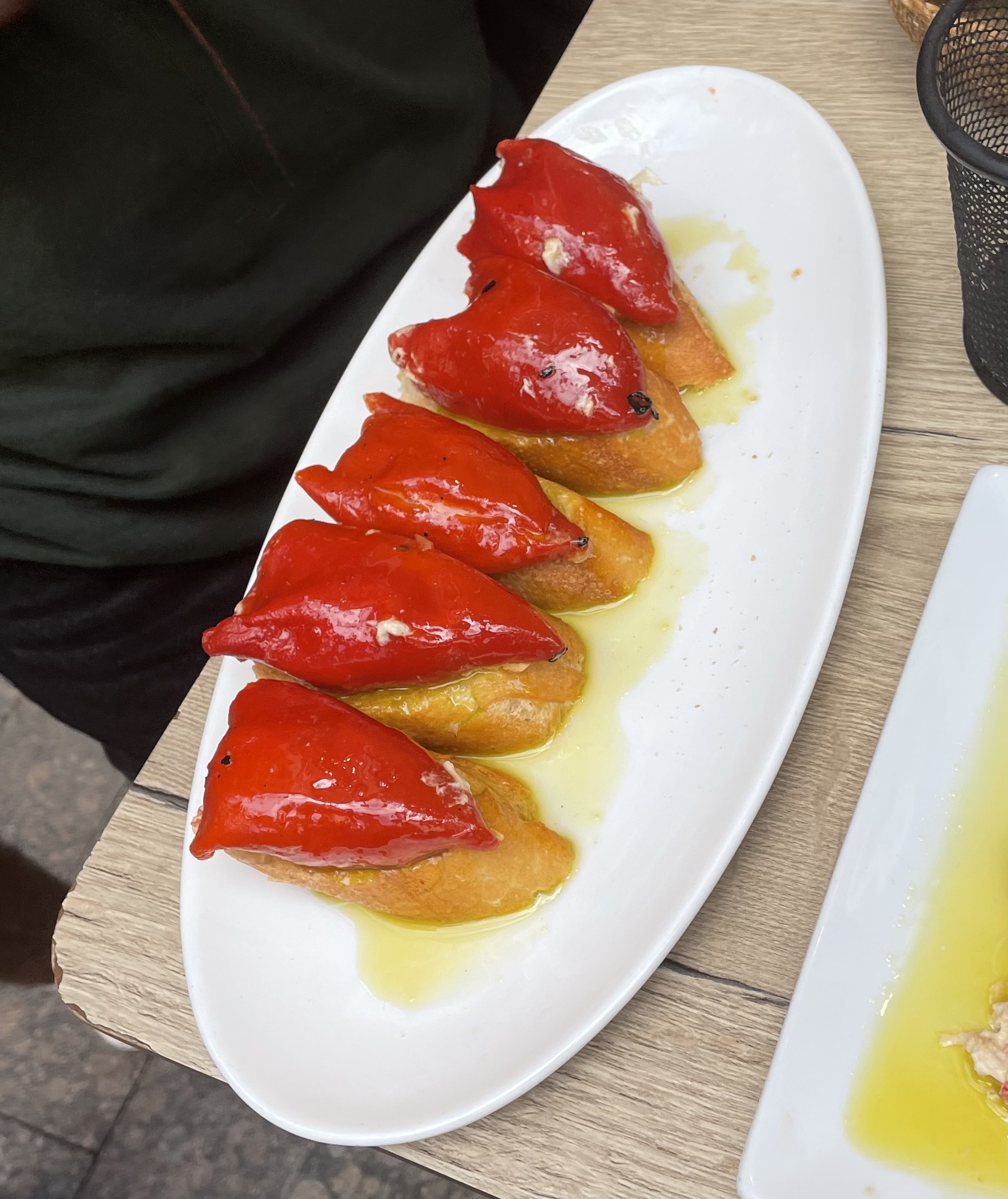
The last place we stopped at was Bar La Vida Restaurante, wich is the place where San Sebastian’s famous burnt cheesecake was invented. The owner, who with friends with Professor Zabalbeascoa, was a very nice man and seemed very happy. The Cheesecake itself was pretty good and was very creamy and gooey, but didn’t have a lot of flavor. But considering that this was my first time having cheesecake I assume this is normal since this cheesecake is so well known.
Conclusion
Overall this was a great experience, getting to see the culture and taste some of San Sebastian’s most famous foods. I’m glad to have the opportunity to try multiple ingredients that I have never had before and would not have had if I had not gone to San Sebastian in the first place. I can’t wait to see what foods I discover next and I’m planning on going back to Old Town to eat some more Pintxos.
